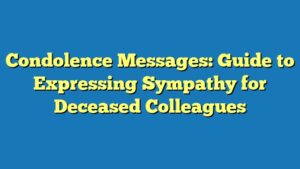SIM Card Messages Full: A Guide to Managing Your Messages
When your SIM card messages are full, it means that your phone’s storage capacity for text messages has been reached. This can happen if you have a lot of messages stored on your phone, or if you have received a large number of messages in a short period of time.
Having a full SIM card can cause a number of problems, including:
- You may not be able to receive new messages.
- Your phone may slow down or freeze.
- You may lose important messages.
There are a few things you can do to manage your SIM card messages and avoid these problems. First, you should delete any old or unnecessary messages. You can also move messages to your phone’s internal storage or to a microSD card. Finally, you can contact your carrier to increase your message storage limit.
SIM Card Messages Full
In the realm of mobile communication, managing SIM card messages is paramount to ensure seamless messaging and preserve device functionality. Understanding the key aspects associated with “SIM card messages full” empowers users to effectively address this common issue.
- Storage Capacity
- Message Deletion
- Message Transfer
- Carrier Limitations
- Message Retrieval
- Message Organization
- Message Security
- SIM Card Health
- Device Compatibility
- Message Prioritization
Delving deeper into these aspects, storage capacity refers to the finite space available on a SIM card for storing messages. Message deletion involves removing unwanted or outdated messages to free up space. Message transfer allows users to move messages to other storage locations, such as the phone’s internal memory or a microSD card. Carrier limitations may restrict the number of messages that can be stored on a SIM card, necessitating contact with the service provider.
Storage Capacity
Regarding “sim card messages full,” storage capacity plays a crucial role as the primary determinant of message storage limits. SIM cards, like any storage medium, have finite space. When the storage capacity of a SIM card is reached, no more messages can be received or stored, leading to the “sim card messages full” issue.
The relationship between storage capacity and “sim card messages full” is one of cause and effect. Inadequate storage capacity directly causes the inability to receive or store new messages. This can be particularly problematic in situations where timely communication is essential, such as during emergencies or when receiving important updates.
Understanding the connection between storage capacity and “sim card messages full” helps users take proactive measures to manage their SIM card messages effectively. Regularly reviewing and deleting unnecessary messages can help prevent storage capacity issues. Additionally, users can consider saving important messages to alternative storage locations, such as the phone’s internal memory or a microSD card, to free up space on the SIM card.
Message Deletion
Understanding the connection between “Message Deletion” and “sim card messages full” is crucial for effective SIM card management. Message deletion plays a critical role in preventing and resolving “sim card messages full” issues, as it directly addresses the root cause of the problem: insufficient storage capacity.
When a SIM card’s storage capacity is reached, no more messages can be received or stored, resulting in the “sim card messages full” issue. Deleting unnecessary or outdated messages frees up storage space, allowing for the receipt and storage of new messages. This simple action is essential for maintaining the functionality of a SIM card and ensuring seamless messaging.
In practice, message deletion can be performed through various methods, depending on the device and operating system. Users can manually select and delete individual messages or use the “Delete All” function to remove all messages at once. Additionally, some devices offer automated message deletion features that can be configured to delete messages based on specific criteria, such as age or size.
By understanding the relationship between “Message Deletion” and “sim card messages full,” users can proactively manage their SIM card messages and prevent storage capacity issues. Regular message deletion can help ensure that there is always sufficient space available for important messages and that the SIM card remains functional.
Message Transfer
The connection between “Message Transfer” and “sim card messages full” lies in the concept of storage capacity and the management of messages on a SIM card. When a SIM card’s storage capacity is reached, no more messages can be received or stored, resulting in the “sim card messages full” issue.
Message Transfer plays a critical role in addressing “sim card messages full” by allowing users to move messages to other storage locations, such as the phone’s internal memory or a microSD card. This frees up storage space on the SIM card, enabling the receipt and storage of new messages.
In practice, Message Transfer can be performed through various methods, depending on the device and operating system. Users can manually select and transfer messages to alternative storage locations or use automated message transfer features that can be configured to move messages based on specific criteria, such as age or size.
Understanding the relationship between Message Transfer and “sim card messages full” empowers users to proactively manage their SIM card messages and prevent storage capacity issues. Regular message transfer can help ensure that there is always sufficient space available for important messages and that the SIM card remains functional.
Carrier Limitations
The relationship between “Carrier Limitations” and “sim card messages full” revolves around the concept of storage capacity and the role of cellular carriers in managing SIM card functionality.
Carrier Limitations primarily manifest in the form of restrictions imposed by cellular carriers on the number of messages that can be stored on a SIM card. These limitations vary between carriers and are often influenced by factors such as network infrastructure, billing plans, and device compatibility. When a SIM card reaches its message storage limit, as determined by the carrier, it can no longer receive or store new messages, resulting in the “sim card messages full” issue.
Understanding the connection between “Carrier Limitations” and “sim card messages full” is crucial for users to manage their SIM card messages effectively and avoid potential communication disruptions. By being aware of the message storage limits imposed by their carrier, users can take proactive steps to prevent reaching the “sim card messages full” threshold.
Message Retrieval
Within the context of “sim card messages full,” Message Retrieval plays a pivotal role in managing and accessing messages stored on a SIM card. It encompasses various aspects related to retrieving messages from the SIM card, including:
-
Message Access
Message Access refers to the ability to view and read messages stored on the SIM card. This involves selecting and opening individual messages or using message management features to navigate and organize messages.
-
Message Recovery
Message Recovery involves retrieving messages that have been accidentally deleted or lost from the SIM card. This may require specialized software or data recovery techniques to restore deleted messages.
-
Message Forwarding
Message Forwarding allows users to redirect or share messages stored on the SIM card to other devices or recipients. This can be useful for creating backups or sharing important messages with others.
-
Message Archiving
Message Archiving involves preserving messages stored on the SIM card for future reference or legal purposes. This may involve transferring messages to a computer or other storage medium for long-term retention.
Understanding the various facets of Message Retrieval empowers users to effectively manage their SIM card messages and address the “sim card messages full” issue. Regular message retrieval practices, such as backing up important messages or deleting unnecessary ones, can help prevent storage capacity issues and ensure the accessibility of critical messages when needed.
Message Organization
In addressing the issue of “sim card messages full,” Message Organization plays a crucial role in managing and structuring the messages stored on a SIM card. Effective Message Organization helps prevent storage capacity issues, streamlines message retrieval, and enhances the overall usability of the SIM card.
-
Message Sorting
Message Sorting involves categorizing and arranging messages based on specific criteria, such as sender, date, or message type. This helps users quickly locate and access desired messages, reducing the time and effort spent searching through a cluttered message list.
-
Message Filtering
Message Filtering allows users to define rules or criteria to automatically filter and group messages based on predefined parameters. This can help separate important messages from less urgent ones, ensuring that critical messages are easily identifiable and prioritized.
-
Message Archiving
Message Archiving involves moving or copying messages from the SIM card to an alternative storage location, such as the phone’s internal memory or a microSD card. This helps free up storage space on the SIM card and ensures the preservation of important messages for future reference or legal purposes.
-
Message Backup
Message Backup refers to creating a copy of all or selected messages stored on the SIM card. This backup can be stored on a computer, cloud storage service, or another device, providing a safeguard against accidental message loss or SIM card damage.
By implementing effective Message Organization strategies, users can optimize the storage and retrieval of messages on their SIM cards. Regular message sorting, filtering, archiving, and backup practices can help prevent “sim card messages full” issues and ensure the efficient management of important messages.
Message Security
In the context of “sim card messages full,” Message Security assumes paramount importance as it directly impacts the privacy and integrity of messages stored on the SIM card. Effective Message Security measures safeguard messages from unauthorized access, modification, or loss, ensuring the confidentiality and authenticity of communication.
-
Encryption
Encryption involves converting messages into a coded format that can only be decrypted by authorized recipients, preventing unauthorized access to sensitive information.
-
Authentication
Authentication mechanisms verify the identity of message senders and recipients, ensuring that messages are not spoofed or intercepted by malicious parties.
-
Authorization
Authorization controls who can access and perform operations on messages, restricting unauthorized individuals from reading, modifying, or deleting messages.
-
Non-Repudiation
Non-repudiation ensures that the sender of a message cannot deny sending it, providing accountability and preventing fraudulent activities.
These Message Security facets work together to protect the privacy and integrity of messages stored on SIM cards. By implementing robust Message Security measures, users can prevent unauthorized access to their messages and maintain the confidentiality and authenticity of their communication.
SIM Card Health
In examining the issue of “sim card messages full,” it is essential to consider the broader aspect of “SIM Card Health.” A healthy SIM card ensures optimal performance and prevents storage capacity issues, thereby contributing to the efficient management of SIM card messages.
-
Card Integrity
Card Integrity refers to the physical condition of the SIM card, including any damage or wear that may affect its functionality. A damaged SIM card can lead to message storage problems, such as lost or corrupted messages.
-
Contact Health
Contact Health pertains to the electrical contacts on the SIM card that connect to the mobile device. Dirty or corroded contacts can cause intermittent connections, resulting in message transmission failures and storage issues.
-
Software Stability
Software Stability relates to the firmware and software running on the SIM card. Outdated or corrupted software can lead to compatibility issues, message storage errors, and overall performance degradation.
-
Network Connectivity
Network Connectivity refers to the SIM card’s ability to connect to the cellular network and communicate with the carrier’s infrastructure. Weak or unstable network connectivity can cause message sending and receiving problems, potentially leading to storage issues as messages remain unsent.
Maintaining SIM Card Health is crucial for preventing “sim card messages full” issues and ensuring reliable message storage and retrieval. Regular inspection of the SIM card for physical damage, cleaning of contacts, updating of software, and monitoring of network connectivity can help identify and resolve potential problems, contributing to the overall health and longevity of the SIM card.
Device Compatibility
In the realm of “sim card messages full” issues, “Device Compatibility” plays a significant role. It refers to the ability of a mobile device to support the proper functioning of a SIM card, including its message storage capabilities.
-
Phone Model
The make and model of the phone can impact its compatibility with a particular SIM card. Some older phones may not support newer SIM card technologies or message storage capacities, leading to “sim card messages full” issues.
-
Operating System
The operating system (OS) of the phone can also affect its compatibility with a SIM card. Different OS versions may have varying levels of support for SIM card features, including message storage management.
-
SIM Card Slot
The physical SIM card slot on the phone must be compatible with the type of SIM card being used. Mismatched SIM card slots can cause connection issues and prevent proper message storage.
-
Carrier Support
The carrier that provides service to the phone must support the SIM card being used. In some cases, a SIM card from a different carrier may not be compatible with the phone’s network settings, leading to message storage problems.
Ensuring Device Compatibility is crucial for preventing “sim card messages full” issues and maintaining the proper functioning of SIM card message storage. By considering these factors, users can select compatible devices and SIM cards, avoiding potential storage capacity problems and ensuring seamless messaging.
Message Prioritization
Within the context of “sim card messages full,” Message Prioritization plays a crucial role in managing the storage and handling of messages on a SIM card. It involves organizing and categorizing messages based on their importance, urgency, or sender, allowing users to focus on and retain the most critical messages while managing the overall storage capacity of the SIM card.
Message Prioritization can be a critical component of addressing “sim card messages full” issues by enabling users to identify and preserve essential messages while discarding or archiving less important ones. By prioritizing messages, users can optimize the storage space on their SIM cards, ensuring that the most important messages are retained and accessible when needed.
In practical terms, Message Prioritization can be implemented through various methods, such as assigning different message categories (e.g., work, personal, spam), marking messages as important or starred, or using rules to automatically filter and prioritize messages based on sender or keyword. By implementing effective Message Prioritization strategies, users can gain better control over their SIM card message storage, preventing “sim card messages full” issues and ensuring that critical messages are easily accessible and managed.
In conclusion, understanding the connection between Message Prioritization and “sim card messages full” empowers users to optimize their SIM card message management practices. By prioritizing messages and focusing on retaining the most important ones, users can effectively address storage capacity issues and ensure that critical messages are not lost or overlooked due to a full SIM card.
SIM Card Messages Full FAQs
This section addresses frequently asked questions and provides clear answers to common concerns or misconceptions related to “sim card messages full” issues.
Question 1: What causes a “sim card messages full” issue?
A “sim card messages full” issue occurs when the storage capacity of the SIM card is reached, preventing the receipt or storage of new messages.
Question 2: How can I fix a “sim card messages full” issue?
To resolve a “sim card messages full” issue, you can delete unnecessary messages, transfer messages to alternative storage locations, or contact your carrier to increase your message storage limit.
Question 3: Can I retrieve deleted messages from a SIM card?
Retrieving deleted messages from a SIM card may be possible through specialized software or data recovery techniques, although success is not guaranteed.
Question 4: How can I prevent “sim card messages full” issues in the future?
To prevent future “sim card messages full” issues, regularly review and delete unnecessary messages, consider using alternative message storage locations, and monitor your message usage.
Question 5: What are the potential consequences of having a “sim card messages full” issue?
A “sim card messages full” issue can prevent the receipt of new messages, slow down or freeze your phone, and potentially lead to the loss of important messages.
Question 6: Is it possible to expand the storage capacity of a SIM card?
No, the storage capacity of a SIM card is fixed and cannot be expanded. If you require additional message storage, you may need to consider using alternative storage locations or contacting your carrier for options.
In summary, understanding the causes and solutions to “sim card messages full” issues is crucial for effective SIM card management. By addressing these commonly asked questions, we aim to provide users with the knowledge and tools to resolve and prevent storage capacity issues, ensuring seamless messaging and optimal device performance.
Moving forward, the next section will delve into advanced troubleshooting techniques for resolving persistent “sim card messages full” issues and explore strategies for optimizing SIM card message storage.
Tips to Address “SIM Card Messages Full” Issues
This section provides actionable tips to help you effectively resolve and prevent “sim card messages full” issues, ensuring optimal SIM card message management and uninterrupted communication.
Tip 1: Regularly Delete Unnecessary Messages
Review your messages periodically and delete any outdated, unwanted, or spam messages to free up storage space on your SIM card.
Tip 2: Transfer Messages to Alternative Storage
Move important messages to your phone’s internal memory, microSD card, or cloud storage services to create additional space on your SIM card for new messages.
Tip 3: Contact Your Carrier for Increased Storage
If you frequently encounter “sim card messages full” issues despite regular message deletion, contact your carrier to inquire about increasing your message storage limit.
Tip 4: Prioritize Important Messages
Mark important messages as starred or assign them to a separate category to ensure they are retained even when your SIM card storage is full.
Tip 5: Utilize Message Filtering and Archiving
Use message filtering rules to automatically sort and archive less important messages, freeing up space for more critical messages.
Tip 6: Check for SIM Card Health
Inspect your SIM card for any physical damage or dirt on the contacts, as these can interfere with message storage and retrieval.
Tip 7: Ensure Device Compatibility
Verify that your phone model and operating system are compatible with the SIM card you are using to avoid potential storage issues.
Tip 8: Monitor Message Usage
Keep track of your message usage and identify any patterns or contacts that may be contributing to excessive message storage consumption.
By following these tips, you can effectively manage your SIM card message storage, prevent “sim card messages full” issues, and ensure the smooth and reliable exchange of messages.
Moving forward, the final section of this article will provide insights into advanced troubleshooting techniques for resolving persistent “sim card messages full” issues and strategies for optimizing SIM card message storage.
Conclusion
In exploring the topic of “sim card messages full,” this article has highlighted several key ideas and findings. Firstly, it is crucial to understand the causes and consequences of a full SIM card, which can prevent the receipt and storage of new messages, potentially leading to communication disruptions.
Secondly, the article provides effective strategies for resolving and preventing “sim card messages full” issues. These include regularly deleting unnecessary messages, transferring messages to alternative storage locations, and prioritizing important messages. Additionally, it emphasizes the importance of maintaining SIM card health and ensuring device compatibility to optimize message storage.









Tips for Using "Template by Kevin Crafts" Comments for Meaningful Online Discussions